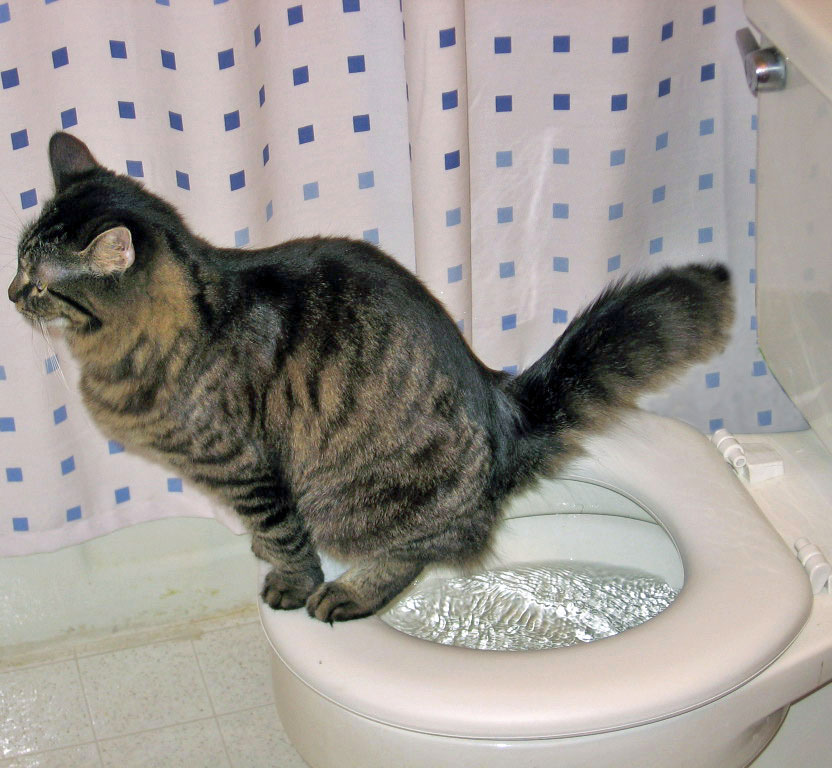Prevent Bathroom Disasters: Don't Flush Cat Poop Down Your Toilet - Professional Advice
Prevent Bathroom Disasters: Don't Flush Cat Poop Down Your Toilet - Professional Advice
Blog Article
The writer is making a few great pointers related to How to Dispose of Cat Poop and Litter Without Plastic Bags in general in the content followed below.

Intro
As feline proprietors, it's important to be mindful of exactly how we take care of our feline close friends' waste. While it may appear convenient to purge feline poop down the commode, this technique can have destructive repercussions for both the atmosphere and human health.
Alternatives to Flushing
Fortunately, there are more secure and a lot more responsible means to throw away cat poop. Take into consideration the complying with choices:
1. Scoop and Dispose in Trash
The most usual method of disposing of feline poop is to scoop it right into a naturally degradable bag and toss it in the garbage. Be sure to utilize a committed litter scoop and throw away the waste promptly.
2. Use Biodegradable Litter
Choose naturally degradable feline clutter made from products such as corn or wheat. These clutters are eco-friendly and can be securely disposed of in the trash.
3. Hide in the Yard
If you have a backyard, take into consideration hiding feline waste in an assigned area far from veggie gardens and water sources. Be sure to dig deep adequate to avoid contamination of groundwater.
4. Set Up a Pet Waste Disposal System
Invest in a pet dog waste disposal system specifically made for feline waste. These systems use enzymes to break down the waste, lowering odor and ecological impact.
Wellness Risks
In addition to ecological concerns, purging cat waste can likewise posture health threats to humans. Feline feces may have Toxoplasma gondii, a parasite that can trigger toxoplasmosis-- a potentially serious health problem, specifically for expecting females and individuals with weakened immune systems.
Environmental Impact
Flushing feline poop presents harmful pathogens and parasites into the supply of water, positioning a considerable danger to water environments. These pollutants can negatively impact aquatic life and concession water high quality.
Conclusion
Liable family pet ownership extends past offering food and shelter-- it additionally involves correct waste administration. By refraining from purging cat poop down the commode and choosing different disposal techniques, we can decrease our environmental impact and protect human health and wellness.
Why Can’t I Flush Cat Poop?
It Spreads a Parasite
Cats are frequently infected with a parasite called toxoplasma gondii. The parasite causes an infection called toxoplasmosis. It is usually harmless to cats. The parasite only uses cat poop as a host for its eggs. Otherwise, the cat’s immune system usually keeps the infection at low enough levels to maintain its own health. But it does not stop the develop of eggs. These eggs are tiny and surprisingly tough. They may survive for a year before they begin to grow. But that’s the problem.
Our wastewater system is not designed to deal with toxoplasmosis eggs. Instead, most eggs will flush from your toilet into sewers and wastewater management plants. After the sewage is treated for many other harmful things in it, it is typically released into local rivers, lakes, or oceans. Here, the toxoplasmosis eggs can find new hosts, including starfish, crabs, otters, and many other wildlife. For many, this is a significant risk to their health. Toxoplasmosis can also end up infecting water sources that are important for agriculture, which means our deer, pigs, and sheep can get infected too.
Is There Risk to Humans?
There can be a risk to human life from flushing cat poop down the toilet. If you do so, the parasites from your cat’s poop can end up in shellfish, game animals, or livestock. If this meat is then served raw or undercooked, the people who eat it can get sick.
In fact, according to the CDC, 40 million people in the United States are infected with toxoplasma gondii. They get it from exposure to infected seafood, or from some kind of cat poop contamination, like drinking from a stream that is contaminated or touching anything that has come into contact with cat poop. That includes just cleaning a cat litter box.
Most people who get infected with these parasites will not develop any symptoms. However, for pregnant women or for those with compromised immune systems, the parasite can cause severe health problems.
How to Handle Cat Poop
The best way to handle cat poop is actually to clean the box more often. The eggs that the parasite sheds will not become active until one to five days after the cat poops. That means that if you clean daily, you’re much less likely to come into direct contact with infectious eggs.
That said, always dispose of cat poop in the garbage and not down the toilet. Wash your hands before and after you clean the litter box, and bring the bag of poop right outside to your garbage bins.
https://trenchlesssolutionsusa.com/why-cant-i-flush-cat-poop/

I ran across that piece on Can You Flush Cat Poop Down The Toilet? while doing a lookup on the internet. Appreciated our posting? Please share it. Help other people check it out. Thanks for your time spent reading it.
Schedule Today! Report this page